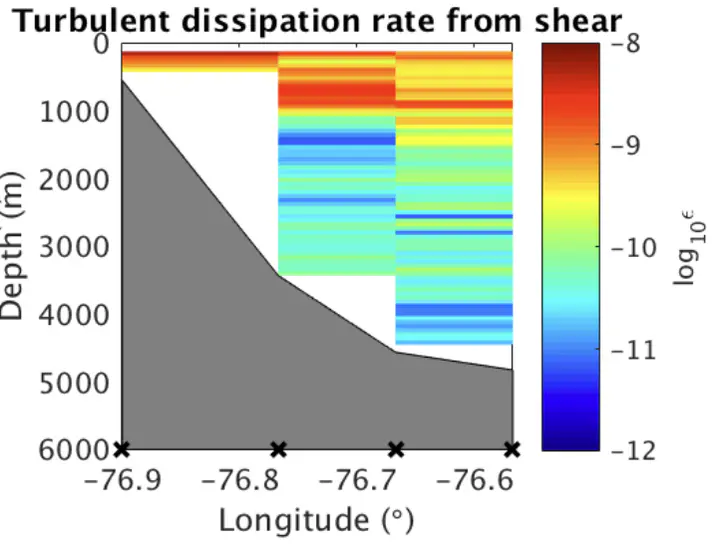Potential mechanisms underpinning the dissipation of mesoscale eddies over the topographic rise east of the Bahamas
 Turbulent dissipation rates estimated using the shear-strain parameterisation from hydrographic sections.
Turbulent dissipation rates estimated using the shear-strain parameterisation from hydrographic sections.Abstract
Even if mesoscale eddies represent universal features of the ocean circulation, the processes by which their energy gets dissipated remain poorly understood. This study analyses the spatial distribution of velocity flow and turbulent dissipation rates over the steep topographic rise of Great Abaco, in the Bahamas, to suggest possible mechanisms for eddy dissipation in the area. Data collected from hydrographic cruises as part of the Western Boundary Time Series (WBTS) project is used while the turbulent dissipation rates are estimated using finescale parameterisation. The restriction of high velocity flows to the upper 1000m of the water column suggest that the bulk of the geostrophic flow from the mesoscale eddies cannot penetrate through the permanent pycnocline and hence cannot reach the seabed in the deeper section of the escarpment. The bottom generation mechanisms such as the formation of lee internal waves are only applicable in the shallow section of the topographic rise and not in the deeper section. There is a significant correlation (r=0.55) between turbulent dissipation rates and near- bottom current speeds in the shallow area of the continental shelf while this correlation fails in the deeper region. Furthermore, given the distribution of high turbulent dissipation rates within the upper section of the water column, the Kelvin wave hydraulic control might be a potential mechanism for eddy dissipation off the eastern coast of the Bahamas. The meridional velocity of the flows above the pycnocline approaches 0.2m/s, a sufficient speed to excite hydraulic control with respect to local Kelvin waves.